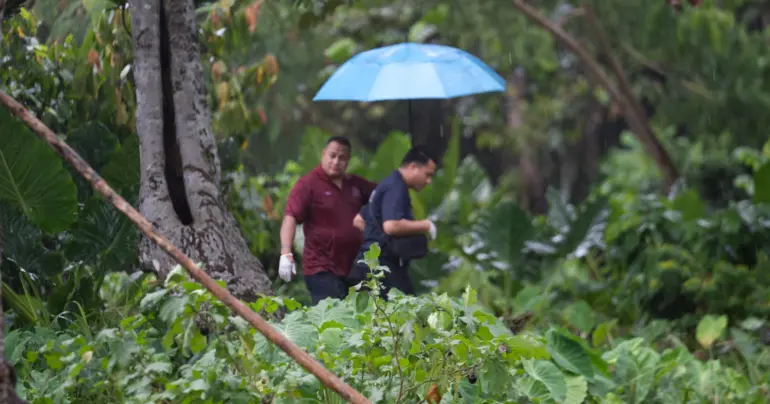State of Environment report unveiled
 By Sialai Sarafina Sanerivi
•
13 September 2024, 9:00PM
By Sialai Sarafina Sanerivi
•
13 September 2024, 9:00PM
Samoa celebrated a pivotal environmental milestone with the launch of its fourth State of Environment (S.O.E.) report at Taumeasina Island Resort on Friday.
The event drew a distinguished crowd, including the Deputy Prime Minister, Cabinet Ministers, the Director General of the Secretariat of the Pacific Regional Environment Programme (S.P.R.E.P.), diplomatic representatives, senior government officials, academics, and key stakeholders.
In his address, Minister for the Ministry of Natural Resources and Environment (M.N.R.E.), Toeolesulusulu Schuster praised the dedicated team at S.P.R.E.P. for their relentless efforts and highlighted the report's role as a crucial tool for environmental monitoring and evaluation.
Toeolesulusulu said the report offers a comprehensive overview of the country's environmental status and is an essential instrument for assessing and addressing environmental issues.
The S.O.E. report was introduced in 1993 providing a detailed account of Samoa's environmental conditions over the past decade.
This latest report not only reviews current environmental challenges but also heralds the unveiling of the National Environment Sector Plan for 2023-2027, which addresses issues highlighted in the S.O.E.
Toeolesulusulu emphasised that the report reflects progress in enhancing Samoa's environmental policies, technical capabilities, and stakeholder engagement over the last ten years.
Key issues outlined in the report include the impact of climate change, the introduction of non-native species, the importation of goods and services, and the push for national development.
He acknowledged the ongoing challenge of limited resources and noted that environmental reports are produced every 10 years to manage these constraints.
However, he also noted that the report's findings can be skewed by significant events such as cyclones, pandemics, and economic crises.
A significant challenge identified was the outdated nature of some data used in the report.
To address this issue, M.N.R.E. plans to produce S.O.E. reports every five years and is developing an environmental dashboard for more frequent updates.
"The escalating challenges posed by climate change, including declining biodiversity and rising pollution from unsustainable practices, demand more regular and timely reporting," Toeolesulusulu said.
The S.O.E. report presents a mixed picture of Samoa's environmental status, showing a combination of good, fair, and poor conditions across terrestrial, marine, and coastal areas.
While some indicators show improvement, others reflect a deterioration, highlighting increased risks from climate change, invasive species, and unsustainable practices.
The marine environment, in particular, faces threats from land-based pollution due to unregulated land development.
Director General of S.P.R.E.P. Sefanaia Nawadra congratulated Samoa on the launch of its fourth S.O.E. report.
"The value of the report lies not just in its content but in the rigorous process of data collection and analysis that went into its creation," Nawadra stated.
He expressed hope that the report would be utilised by the community and decision-makers to foster informed policy decisions and interventions.
The S.O.E. report covers five thematic areas: Climate and Disaster Risk Reduction, Culture and Heritage, the Built Environment, Environmental Governance, and the Natural Environment.
Through an integrated approach, it aims to provide a holistic view of Samoa’s environmental status and highlight the urgent need for comprehensive and effective sustainable management strategies.
The launch of this report marks a significant step forward in Samoa's commitment to environmental stewardship, reflecting both the progress achieved and the ongoing challenges that need to be addressed for the nation's sustainable future.
 By Sialai Sarafina Sanerivi
•
13 September 2024, 9:00PM
By Sialai Sarafina Sanerivi
•
13 September 2024, 9:00PM











